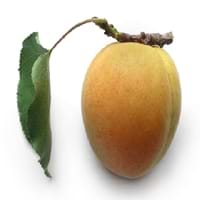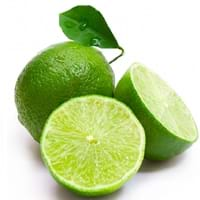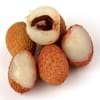Health Benefits
Asthma treatment, Cancer prevention, Controls blood pressure, Digestive aid, Heart care, Maintains hormonal balance, Regulation of heart rate, Skin cleansing, Skin rejuvenation
Arthritis treatment, Cholera treatment, Gout treatment, Heart care, Piles treatment, Scurvy treatment
General Benefits
Boosts immune system, Controls blood pressure, Digestive aid, Eye care, Maintains healthy cholesterol level, Strengthens bones
Cures fever, Digestive aid, Eye care, Maintains healthy cholesterol level, Treatment of common cold
Skin Benefits
Hydrates skin, Reduces wrinkles, Treatment of dark spots, Treatment of skin diseases
Anti-aging benefits, Skin rejuvenation, Treatment of acne, Treatment of dark spots
Hair Benefits
Good conditioner, Regulates hair growth, Rejuvenates scalp, Softening mask, Treatment of dandruff
Promotes longer and healthier hair, Treatment of dandruff
Allergy Symptoms
Abdominal cramps, Anaphylaxis, Breathing difficulty, Diarrhea, Itching of mouth, Itching sensation in throat, Swelling of mouth, tongue or lips, Vomiting, Wheezing
Breathing difficulty, Coughing, Eye irritation, Hives, Inflammation, Nasal congestion, Runny nose, Skin rash, Wheezing
Side Effects
Dizziness, Headache, Nausea, Vomiting
Chances of sunburn
Best Time to Eat
Best if taken as a breakfast (or empty stomach), As a snack in the late afternoon, Don't consume at night and before bed, Eat the fresh ones, avoid mixing with any other foods, don't eat after meal.
Along with meal, Best to drink warm water with lime on an empty stomach, Don't consume at night and before bed
Vitamin B5 (Pantothenic Acid)
Vitamin C (Ascorbic Acid)
Vitamin K (Phyllochinone)
Phytosterol
Not Available
Calories in Fresh Fruit with Peel
Not Available
Calories in Fresh Fruit without Peel
Not Available
Calories in Frozen Form
Not Available
Not Available
Calories in Dried Form
Not Available
Type
Tree fruit
Citrus, Tree fruit
Season
Summer
All seasons
Varieties
Gold Cot, Tilton, Wenatchee, Goldbar, Gold Kist, Tomcot, Harcot, Brittany Gold, Harglow, Hunza, Moorpark, Patterson and Royal Rosa
Key lime, Persian lime, Kaffir lime, Desert lime, Palestine Sweet Lime, Mexican Sweet Lime, Mary Ellen Sweet Lime
Color
Orange, Yellowish-orange
Green
Inside Color
Yellow
Light Green
Taste
Smooth, Sweet
Acidic, Sour
Soil Type
Well-drained
Clay loam, Sandy loam
Climatic Conditions
Dry, Hot
Sunny, Warm to hot climate
Facts about
- 9 Jan is considered as the National Apricot Day.
- Apricots have been around for more than 4000 yrs.
- In latin, the meaning of apricot is 'precious'.
- 95% of apricots in the US are produced by California.
- Lime is the called as the powerhouse of flavors.
- Fresh lime juice is so acidic that it can dissolve concrete.
- Limes are more fragrant and acidic than lemons.
- Persian limes are almost seedless and thorn less.
Top Producer
Turkey
China
Other Countries
Algeria, Egypt, France, Iran, Italy, Morocco, Pakistan, Spain, Uzbekistan
Argentina, Brazil, India, Mexico
Top Importer
United States of America
United States of America
Top Exporter
France
Mexico
Botanical Name
Prunus armeniaca
Citrus aurantifolia
Synonym
Not Available
not available
Subkingdom
Tracheobionta
Tracheobionta
Division
Magnoliophyta
Magnoliophyta
Class
Magnoliopsida
Magnoliopsida
Species
P. armeniaca
C. aurantifolia
Generic Group
Rose
Citrus fruit
Compare Apricot and Lime
It is important compare Apricot and Lime as both the fruits have a different nutritional value. Their comparison can be done on the basis of their vitamin and mineral content, calories, benefits as well as characteristics, making it easier for us to choose the best fruit for our diet. Their general health benefits are as follows:
Apricot Benefits: boosts immune system, controls blood pressure, digestive aid, eye care, maintains healthy cholesterol level and strengthens bones.
Lime Benefits: cures fever, digestive aid, eye care, maintains healthy cholesterol level and treatment of common cold.
Fruits are also used as a remedy for various hair problems. The hair benefits of Apricot are: good conditioner, regulates hair growth, rejuvenates scalp, softening mask and treatment of dandruff and hair benefits of Lime are: promotes longer and healthier hair and treatment of dandruff. Some fruits are known to cause allergic reactions. The allergy symptoms of first fruit are: abdominal cramps, anaphylaxis, breathing difficulty, diarrhea, itching of mouth, itching sensation in throat, swelling of mouth, tongue or lips, vomiting and wheezing and the symptoms of second fruit are: breathing difficulty, coughing, eye irritation, hives, inflammation, nasal congestion, runny nose, skin rash and wheezing. Get sorted Apricot vs Lime comparison with the help of fruit comparison tool by fruitvs.com.









